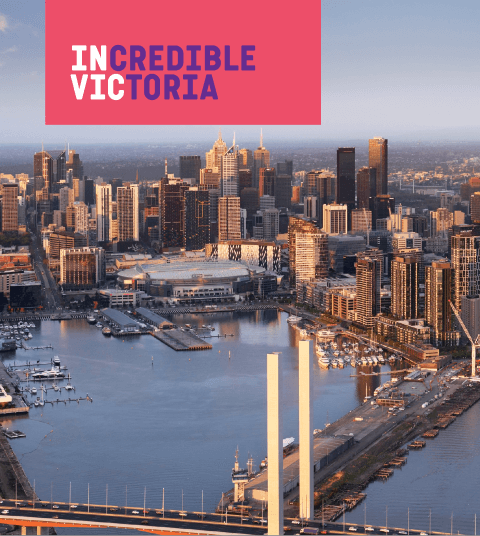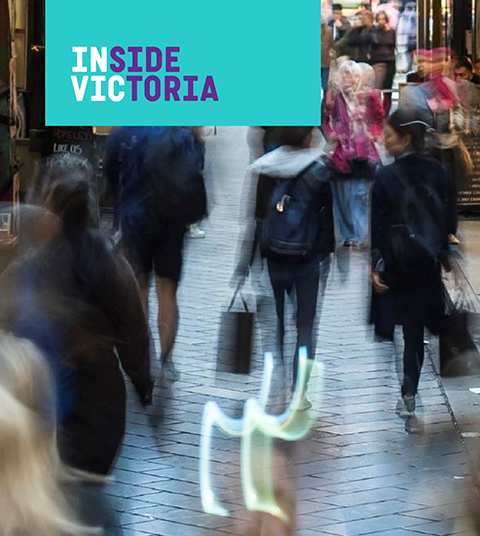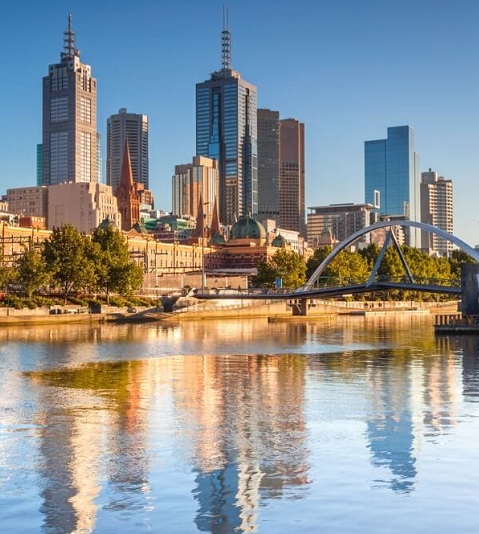Transport infrastructure
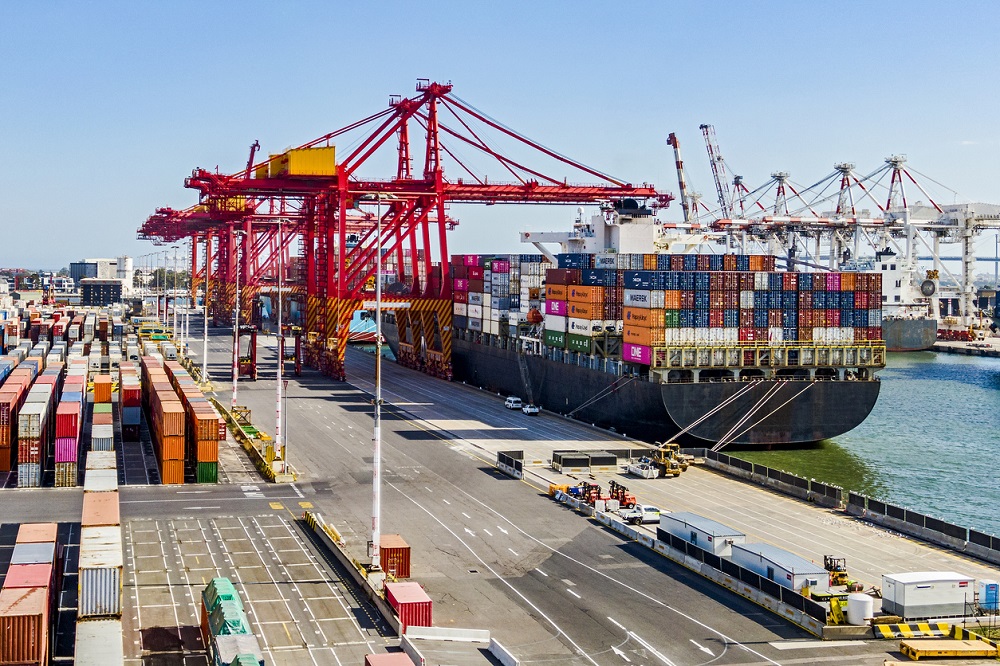
Melbourne’s world-class transport infrastructure positions it as the ideal destination for businesses seeking efficient movement of people and goods.
As Australia’s most connected city, Melbourne offers an integrated network of roads, rail, ports, and airports designed to support seamless logistics and global trade.
With ongoing government investment in cutting-edge projects, businesses can rely on a transport system built for efficiency, reliability, and growth.
Whether accessing domestic markets or leveraging proximity to the Asia-Pacific region, Melbourne offers an unparalleled infrastructure advantage over competitor locations.
Melbourne’s infrastructure is purpose-built to support business success, combining connectivity, capacity, and innovation.
Key transport infrastructure advantages
- Lower freight costs, faster transit times and reliable market access.
- Two curfew free airports: Melbourne Airport, Australian’s busiest, operates 24/7.
- Melbourne’s airports handle 26% of Australia’s air freight and passenger movement.
- Three bulk terminals located in Melbourne, Geelong and Portland provide seamless market access.
- Port of Melbourne: Australia’s largest, best connected and most productive container port, handling over a third of the nation’s container trade annually.
- The Victorian International Container Terminal (VICT): Australia’s first, fully automated container terminal.
- Competitive landside transport costs to port support cost effective logistics.
Integrated transport network
Melbourne’s infrastructure supports business success, combining connectivity, capacity, and innovation. Its integrated transport network seamlessly connects road, rail, air, and sea, for efficient movement of goods and people across the city, the nation, and international markets.
Road and rail networks
Melbourne’s modern, integrated system of road networks combines a suburban grid with high-speed freeways. These freeways connect major infrastructure, including the Port of Melbourne and all airports.
Melbourne serves as a critical gateway to regional Victoria, Tasmania, South and Western Australia.
Melbourne’s world-class infrastructure attained a 96.4 out of 100 in the 2024 EIU Liveability Report, highlighting how connectivity contributes to quality of life and business efficiency.
- Access 80% of Australia’s population within 24 hours by road and rail networks.
- Key rail routes are located within 20 minutes of Melbourne CBD.
Airports
Melbourne Airport
- Australia’s busiest curfew free airport operating 24/7
- Located 30 minutes from central Melbourne by road
- It is serviced by 38 international airlines offering direct flights to 42 international destinations1
- Handles over 35% of Australia's international air freight market2, with time sensitive exports arriving in international markets the day after they leave Melbourne.
Avalon Airport
- Victoria’s secondary airport, offering domestic and some international flights
- Well-suited to support air freight operations, with ample capacity for growth and the potential to handle time-sensitive cargo
- Access to both bulk and container ports
- Located just 45 minutes from Melbourne’s CBD and 20 mins from the Port of Geelong.
Ports
Victoria boasts four commercial trading ports that serve domestic and international trade efficiently, particularly for containerised and bulk commodities.
Port of Melbourne
- Australia’s largest, busiest and best-connected port, handling over 3.26 million TEU annually.
- Australasia’s largest container port.
- Can handle all types of cargo including dry, liquid and breakbulk.
- Strategically located close to central Melbourne, for efficient and reliable containerised and bulk goods movement.
- The Victorian International Container Terminal located within the Port of Melbourne, is Australia’s first, fully automated container terminal.
- Key facilities: Webb Dock (automotive and Ro-Ro), Swanson Dock (containerised freight), and Appleton Dock (bulk goods).
Port of Geelong
- Victoria's second largest port, handling over 10 million tonnes annually.
- Bulk trade hub specialising in handling commodities like crude oil, wood-chip, fertiliser and break-bulk cargo.
Port of Hastings
- Key hub for oil, LPG, ULP, steel imports and exports and other bulk goods.
- Supports general and project cargo, ship-to-ship transfer, pipe-laying and offshore energy infrastructure.
- Future home to the Victorian Renewable Energy Terminal, enhancing offshore wind energy production (pending planning approvals).
Port of Portland
- A deepwater bulk port, serving the resource rich ‘green triangle region’.
- Specialises in bulk commodities like agricultural, forestry and mining products as well as aluminium and fertiliser.
Intermodal hubs
Being Australia’s freight hub, Victoria’s intermodal terminals connect road, rail, and port logistics, facilitating efficient freight movement.
Metropolitan terminal locations
|
|
|
|---|
Regional terminal locations
|
|
|
|---|
Investment in infrastructure
- Victoria’s infrastructure continues to improve, with a $90 billion investment into transport infrastructure.
- Our major transport projects include some of the largest in Australia and globally.
Major projects include:
- North East Link (A$16.5 billion): New major freeway in Melbourne’s east connecting the M80 Ring Road to the Eastern Freeway.
- Metro Tunnel ($A11 billion): A second underground rail tunnel for metropolitan Melbourne.
- Geelong Fast Rail (A$2 billion): Upgrades to rail connections between Melbourne and the second fastest growing city in Australia, Geelong.
- Suburban Rail Loop ($A95+ billion): A new rail network that will connect Melbourne’s middle suburbs along with Melbourne Airport.
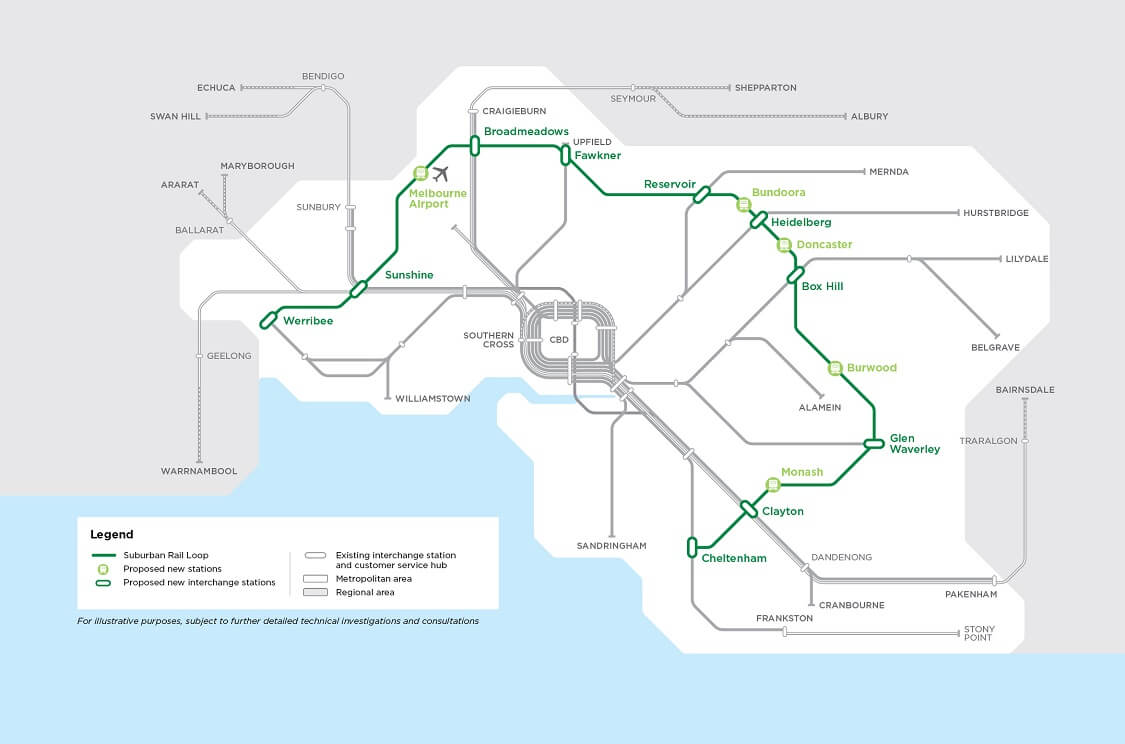
- Western Intermodal Freight Terminal – Truganina
- Beveridge Interstate Freight Terminal
- Dandenong South Intermodal Freight Terminal
Learn about Victorian Government strategies on infrastructure and transport.
Infrastructure maps
Interrogate VicPlan to see various components of Victoria’s infrastructure.
Once in the tool follow these steps:
- click on the Map tab.
- click on Layer List in the horizontal ribbon.
- Expand Transport section.
- Check box to show relevant transport network.
Need assistance? We are here to help
We can help you understand how a Melbourne location may benefit your business.
Source:
1 DJSIR Aviation Team
2Melbourneairport/corporate/freight

